
Yukio Mishima, born Kimitake Hiraoka, was a Japanese author, poet, playwright, actor, model, Shintoist, ultra-nationalist, and leader of an attempted coup d'état which culminated in his suicide. Mishima is considered one of the most important postwar stylists of the Japanese language. He was nominated for the Nobel Prize in Literature five times in the 1960s—including in 1968, but that year the award went to his countryman and benefactor Yasunari Kawabata. His works include the novels Confessions of a Mask and The Temple of the Golden Pavilion, and the autobiographical essay Sun and Steel. Mishima's work is characterized by "its luxurious vocabulary and decadent metaphors, its fusion of traditional Japanese and modern Western literary styles, and its obsessive assertions of the unity of beauty, eroticism and death", according to author Andrew Rankin.
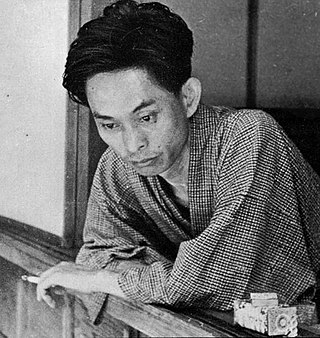
Yasunari Kawabata was a Japanese novelist and short story writer whose spare, lyrical, subtly-shaded prose works won him the 1968 Nobel Prize in Literature, the first Japanese author to receive the award. His works have enjoyed broad international appeal and are still widely read.

Jun'ichirō Tanizaki was a Japanese author who is considered to be one of the most prominent figures in modern Japanese literature. The tone and subject matter of his work range from shocking depictions of sexuality and destructive erotic obsessions to subtle portrayals of the dynamics of family life within the context of the rapid changes in 20th-century Japanese society. Frequently, his stories are narrated in the context of a search for cultural identity in which the West and Japanese tradition are juxtaposed.

The Makioka Sisters is a novel by Japanese writer Jun'ichirō Tanizaki that was serialized from 1943 to 1948. It follows the lives of the wealthy Makioka family of Osaka from the autumn of 1936 to April 1941, focusing on the family's attempts to find a husband for the third sister, Yukiko. It depicts the decline of the family's upper-middle-class, suburban lifestyle as the specter of World War II and Allied Occupation hangs over the novel.

Spring Snow is a novel by Yukio Mishima, the first in his Sea of Fertility tetralogy. It was published serially in Shinchō from 1965 to 1967, and then in book form in 1969. Mishima did extensive research, including visits to Enshō-ji in Nara, to prepare for the novel.
Snow Country is a novel by the Japanese author Yasunari Kawabata. The novel is considered a classic work of Japanese literature and was among the three novels the Nobel Committee cited in 1968, when Kawabata was awarded the Nobel Prize in Literature.
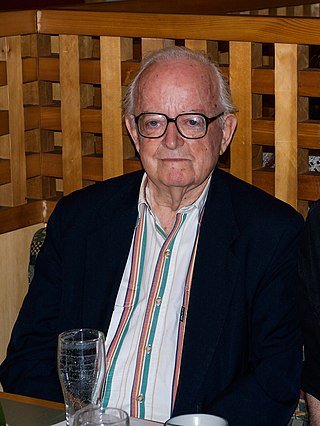
Edward George Seidensticker was a noted post-World War II American scholar, historian, and preeminent translator of classical and contemporary Japanese literature. His English translation of the epic The Tale of Genji, published in 1976, was especially well received critically and is counted among the preferred modern translations.
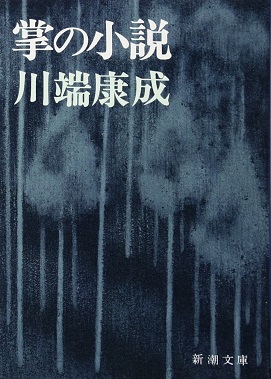
Palm-of-the-Hand Stories is the name Japanese author Yasunari Kawabata gave to 146 short stories he wrote during his long career. The earliest stories were published in the early 1920s, with the last appearing posthumously in 1972. The first Japanese edition to collect these stories appeared in 1971. The title refers to the brevity of the stories – many of which are only two to three pages long – which would "virtually fit into the palm of the hand".

Jakucho Setouchi, formerly known as Harumi Setouchi, was a Japanese Buddhist nun, writer, and activist. Setouchi wrote a best-selling translation of The Tale of Genji and over 400 fictional biographical and historical novels. In 1997, she was honoured as a Person of Cultural Merit, and in 2006, she was awarded the Order of Culture of Japan.
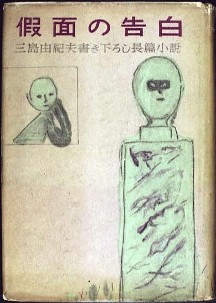
Confessions of a Mask is the second novel by Japanese author Yukio Mishima. First published on 5 July 1949 by Kawade Shobō, it launched him to national fame though he was only in his early twenties. Some have posited that Mishima's similarities to the main character of the novel come from the character acting as a stand-in for Mishima's own autobiographical story.
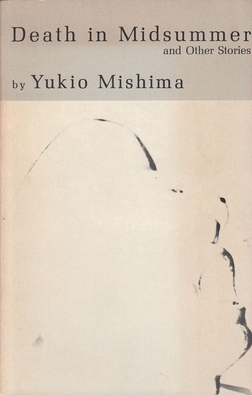
Death in Midsummer and Other Stories is a 1966 collection of English translations of stories by Japanese writer Yukio Mishima. The book takes its name from the included short story of the same title.

Valdo H. Viglielmo was a prominent scholar and translator of Japanese literature and works of Japanese philosophy.
One Arm is a short story by Japanese writer and Nobel Prize winner Yasunari Kawabata. It appeared in serialised form in the literary magazine Shinchō in 1963 and 1964. It has been considered as a main example of the current of magic realism in Japanese Literature.
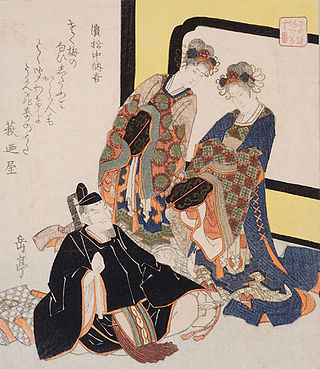
Hamamatsu Chūnagon Monogatari (浜松中納言物語), also known as Mitsu no Hamamatsu (御津の浜松), is an eleventh-century Japanese monogatari that tells about a chūnagon who discovers that his father has been reborn as a Chinese prince. He visits his reincarnated father in China and falls in love with the Hoyang Consort, consort of the Chinese Emperor and mother of his reborn father. The book originally comprised six chapters, but the first chapter has been lost.
The bibliography of Kimitake Hiraoka, pen name Yukio Mishima, includes novels, novellas, short stories and literary essays, as well as plays that were written not only in a contemporary-style, but also in the style of classical Japanese theatre, particularly in the genres of noh and kabuki. However, although Mishima took themes, titles and characters from the noh canon, he included his own twists and modern settings, such as hospitals and ballrooms, which startled audiences who were accustomed to the long-settled originals.
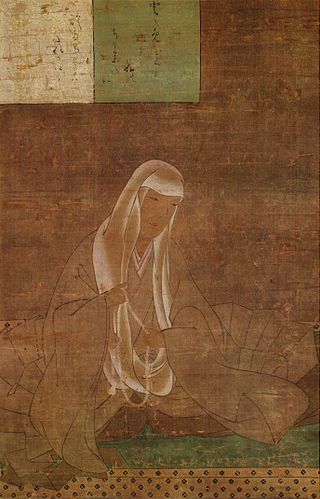
Abutsu-ni was a Japanese poet and nun. She served as a lady-in-waiting to Princess Kuni-Naishinnō, later known as Empress Ankamon-in. In approximately 1250 she married fellow poet Fujiwara no Tameie. She had two children with him. Following his death in 1275, she became a nun. A dispute over her son's inheritance led her, in either 1277 or 1279, to travel from Kyoto to Kamakura in order to plead on her son's behalf. Her account of this journey, told in poems and letters, was published as Izayoi nikki, her most well-known work.
Facing Two Ways: The Story of My Life is a memoir by Baroness Shidzué Ishimoto published in 1935 by Farrar & Rinehart with a second edition published by Stanford University Press in 1984 with an introduction and afterword by Barbara Molony.

Hachikazuki or Hachi Katsugi is a Japanese folktale of the Otogi-zōshi genre. It refers to a maiden of noble birth who wears a bowl on her head and marries a prince.
Death in Midsummer is a short story by Japanese writer Yukio Mishima first published in October 1952.
The Prison Memoirs of a Japanese Woman is a book written by Kaneko Fumiko. Jean Inglis translated the book into English, in a translation published in 1991 by M.E. Sharpe. Mikiso Hane wrote the introduction to the English version.














